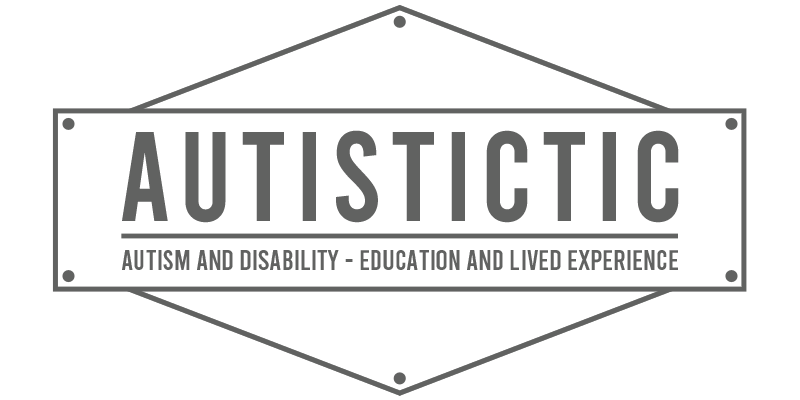HOME » BLOG » AGGRESSION – THE WEAPONIZATION OF A FALSE LABEL TO UNDERMINE DEVELOPMENTALLY/INTELLECTUALLY DISABLED PEOPLE’S HUMAN RIGHTS

AGGRESSION – THE WEAPONIZATION OF A FALSE LABEL TO UNDERMINE DEVELOPMENTALLY/INTELLECTUALLY DISABLED PEOPLE’S HUMAN RIGHTS

WHAT AGGRESSION IS
Aggression is behavior executed with the intent to harm another person non-consensually.
Here is what that means:
If it is not a behavior, it is not aggression.
Feeling angry is not aggression.
Having angry thoughts is not aggression.
If there is no intent to harm, it is not aggression.
Accidentally harming someone is not aggression.
Involuntarily harming someone is not aggression.
If the behavior is aimed at oneself, it is not aggression.
Self-harm is not aggression.
Self-injurious behavior is not aggression.
If the behavior is done to someone consensually, it is not aggression.
Harming someone with their informed consent is not aggression.
Some people include behavior executed with the intent to do damage to objects as aggression. I understand why. However, this is a dangerous slippery slope – especially in the context in which I will be discussing aggression which is developmental/intellectual disability.
(In my opinion, the definition of aggression should also include behavior executed with the intent to harm animals.)
If a behavior meets the criteria for aggression but is executed in self-defense, is it still aggression?
Most people agree that non-consensually harming someone in an act of self-defense is very different from non-consensually harming someone without the need to defend oneself.
At the same time, many people have executed aggressive behaviors against others believing they were “only defending themselves” when they really weren’t, when there factually was no threat.
In theory, the term “aggression” is a value-free factual descriptor. In practice, however, our society assigns aggression a negative value judgment. In turn, negative consequences for aggressive behaviors are deemed justified. Thus, differentiating between self-defense and non-self-defense situations is important.
Personally, I don’t call self-defense “aggression”. For one, because the term has an inherent negative value judgment in our society. But also because the label “aggression” gets so commonly weaponized against developmentally/intellectually disabled people.
If anyone does call self-defensive behaviors that technically meet the criteria for “aggression” by that term, they should at least clarify the self-defensive nature. Possible options for this would be “defensive aggression”, “self-defensive aggression”, or “justified aggression”. However, I strongly advocate that self-defense not be labeled aggression, period.
HOW AND WHY PEOPLE WEAPONIZE THE LABEL “AGGRESSION” AGAINST DEVELOPMENTALLY/INTELLECTUALLY DISABLED PEOPLE
The official definition of aggression as explained above is reflected in psychology, societal views, and even judicial systems. Despite this fact, people, especially “professionals”, frequently knowingly label behaviors as “aggression” that do not meet the criteria for aggression.
Note that I put “professionals” in quotation marks. I do so because people who do this to disabled people shouldn’t have their actions validated by referring to them as professionals.
People label accidental, unintentional, involuntary behaviors “aggression”.
They label self-harming and self-injurious behaviors “aggression”.
They even label behaviors “aggression” that don’t do any harm or damage at all.
People then deploy consequences and punishments for the “aggression” as they please.
There are three main reasons why people, especially “professionals”, mislabel developmentally/intellectually disabled people as “aggressive”:
1. They do it to justify modifying/punishing behaviors as they please.
Society rightfully deems aggressive behavior unacceptable.
Modifying/punishing aggressive behavior is thus seen as acceptable, even necessary.
Because of this, declaring a behavior as “aggressive” serves to justify modifying/punishing it.
For example:
It’s easy to justify punishing a student who “hit someone in the face during a bout of aggression”.
It’s harder to justify punishing a student who accidentally, unintentionally, uncontrollably hit someone in the face during an autistic meltdown because that person came too close despite knowing better.
Of course, systemic autmisia and other ableism (as well as other intersecting oppressions) in our society mean that people in positions of power over developmentally/intellectually disabled people often don’t even need any justification to be allowed to modify and/or punish their behaviors. Justification makes it easier though, and in this context, justification is a reason why people do this.
1. They do it to avoid having to support developmentally/intellectually disabled people properly.
The label “aggression” allows people to forgo having to properly support developmentally/intellectually disabled people.
Any lack of support, access, equality, participation can be explained away with their “aggression”.
Why is this disabled person not in school? They are too aggressive.
Why is this disabled person locked in a room all day? They are too aggressive.
Why is this disabled person not given an AAC device? They are too aggressive.
Why is this disabled person not given access to a job that pays a living wage? They are too aggressive.
Rinse and repeat for absolutely everything and anything.
3. They do it because the label “aggression” and the deployed “consequences” are rarely questioned by others.
“Aggression” is an easy false label to give because to many people the behaviors labeled “aggression” do look like aggression. Especially when people didn’t observe the lead-up, or when they don’t know what to look for. This means that to many the false label “aggression” appears not false but correct.
On top of this, people tend to believe whoever they perceive to be knowledgeable on an issue. In this case, they tend to believe parents and professionals who assign “aggression” labels. They don’t tend to believe developmentally/intellectually disabled people who they perceive as incompetent, unreliable, disturbed, etc.
Another reason mislabeling developmentally/intellectually disabled people as “aggressive” is so easy is that this label depends on intent. The intent to harm is required for a behavior to qualify as aggression. Intent happens inside a person. Unless a person clearly communicates their intent, it cannot be known. People can make assumptions, but certainty can only come from the person’s own communication.
It is very easy to assign “aggressive” intent to someone’s behavior. Especially for people in positions of power. Some disabled people can argue their intent wasn’t to harm – but who listens to them over the experts, the professionals? Some can’t even argue because the same people who mislabel them also withhold access to e.g. communication methods that would allow them to effectively self-advocate.
People rarely question behavior modification/punishment for “aggression”. That’s because they believe that if someone is aggressive, then consequences people implement are justified and even necessary.
In short, the false label “aggression” is a quick, easy, widely accepted circumvention of developmentally/intellectually disabled people’s human rights.
THE HARM MISLABELING PEOPLE AS “AGGRESSIVE” DOES
The range of harm mislabeling developmentally/intellectually disabled people as “aggressive” can cause is extensive.
The damage done can be emotional, psychological, and physical. It can be temporary, chronic, long-term, and traumatic. For many developmentally/intellectually disabled people, this is a life-long experience of victimization and re-victimization.
The following is by no means a complete account of all the ways in which mislabeling developmentally/intellectually disabled people “aggressive” harms. I hope it is enough for everyone to understand that this practice needs to stop, unequivocally and immediately.
There is harm from the mislabeling process itself.
Having one’s communication prior to the “aggression” unrecognized, unacknowledged, ignored, or twisted against oneself. Having unmet needs and improper support. Being blamed for the failures of the people meant to support you. Being made to believe you intentionally hurt people. Having your involuntary, uncontrollable difficulties used against you. Being made to believe you are a bad person. Not being believed. Being powerless. Being labeled “aggressive” when one really is struggling, distressed, suffering, desperate.
There is harm from what comes after the label “aggression”.
Having to apologize to the very people who caused this to happen. Punishments of any and all sorts from emotional, over psychological, to physical. Planned ignoring. Reprimand. Loss of “privileges”. Time-outs. Seclusion. Restraint. Being drugged. Institutionalization. Excluded from education. Denied agency and autonomy. Excluded from working. Access to anything and everything withheld. A false record that follows you everywhere. An endless spiral of less support and more “aggression”.
WHY “AGGRESSIVE” BEHAVIORS REALLY OCCUR
Before talking about reasons for why falsely labeled “aggressive” behaviors occur, let me clarify one thing: Yes, developmentally/intellectually disabled people can be aggressive. They are human beings, thus they can display the full range of human behaviors, including aggression. However, in most cases developmentally/intellectually disabled people are mislabeled as “aggressive” when they factually aren’t.
It is incredibly common that the very people mislabeling developmentally/intellectually disabled people’s behaviors as “aggression” are the ones who cause the behavior in the first place. The behaviors they mislabel are usually self-defense and/or last-ditch efforts at communication. They occur because they themselves left the developmentally/intellectually disabled person no other way out.
There are many things people do to developmentally/intellectually disabled people on a daily basis that can trigger “aggressive behavior”.
What happens most commonly is this:
A developmentally/intellectually disabled person is in distress and/or has unmet needs. The disabled person communicates this, but other people either don’t notice or outright ignore that communication. The harm persists and possibly worsens. Thus the distress and/or unmet needs persist and possibly worsen as well. Eventually, the distress and/or unmet needs become unbearable. At some point, the disabled person has tried everything in their power to communicate, get out of the situation, but nothing worked. Ultimately, their behavior escalates and escalates into what others then consider “aggression” – a last-ditch effort to end the suffering.
The people who do this to the disabled person are then often very shocked and outraged at the “aggression”.
People often call this “unpredictable”, “sudden”, and “unpreventable” – all of which is untrue.
It is not that difficult to spot where things go wrong in these situations, if you know and care what to look for.
Most of these situations are predictable – if you know a person’s needs and triggers. This means you can take many steps along the way to prevent the final “outburst”.
Most of these situations build up, they don’t suddenly happen out of nowhere – you just didn’t notice, or ignored communication and/or warning signs.
Most of these situations are preventable – if you support the disabled person properly. This includes e.g. avoiding triggers, listening to people’s communication, and respecting people’s autonomy, agency, and consent.
WHEN CAUSING HARM IS STANDARD PRACTICE
At this point it is worth noting that ignoring developmentally/intellectually disabled people’s communication is standard practice for many professionals. It is in fact an integral part of some forms of “therapy” (most notably ABA “therapy” and approaches like it).
Professionals are often explicitly taught to ignore disabled people’s communication. They learn to only accept certain kinds of communication, often ones inaccessible to the disabled person. They learn to set goals and demands for disabled people without their input or explicitly against it. They learn to manipulate, coerce, force, punish until they get whatever behavioral result they want.
In discourse about “aggression” in developmentally/intellectually disabled people, the factual victim (disabled person) and perpetrator (professionals) roles are commonly being twisted. This is possible largely because disabled people are not being heard, while those “caring for” them are. The narrative is dominated by those working with and caring for disabled people – not disabled people themselves.
Add to that the societal view of developmentally/intellectually disabled people as burdens and those working with them/caring for them as saints, et voila: Professionals who factually cause harm are seen as the victims. Disabled people who are factually being harmed become the “aggressive”, “dangerous”, “abusive” “perpetrators”.
WHAT TO DO, IF YOU DON’T WANT DEVELOPMENTALLY/INTELLECTUALLY DISABLED PEOPLE TO DISPLAY “AGGRESSION”:
1. See and treat developmentally/intellectually disabled people as full and complete human beings equal to yourself.
2. Respect developmentally/intellectually disabled people’s human rights. This includes their rights to autonomy, agency, and informed consent. Your wants and needs don’t override these, no matter how much “harder” that makes your life or your job.
3. Stop any and all views and practices that go against developmentally/intellectually disabled people’s human rights. This includes but is not limited to: harmful “therapies” and “treatments”, seclusion, segregation, sheltered workshops, restraint, institutionalization.
4. Listen to and respect developmentally/intellectually disabled people’s communication – whether it is oral speech or non-speaking methods of communication.
5. Stop falsely labeling behaviors as “aggression”.
6. If you witness the mislabeling of “aggression”, don’t just stand by. Speak up for developmentally/intellectually disabled people. Allow them to and support them self-advocating. Hold people who harm them accountable.
7. Understand the needs and triggers of the developmentally/intellectually disabled people in your life and support them properly.
8. Don’t do things to developmentally/intellectually disabled people that cause them unnecessary distress or a need to defend themselves. If distress is unavoidable, figure out ways to minimize distress as much as possible. Expect and prepare for distress reactions, and do not punish people for them. (E.g. medical care can be distressing but necessary…this is not an excuse to falsely label whatever you please as “necessary”)
9. To properly support developmentally/intellectually disabled people, please learn from those you support, and also more generally from self-advocacy disability groups. Whatever training you may have received from people without lived experience is not good enough.
10. Support and join developmentally/intellectually disabled people’s fight for liberation.
FINAL THOUGHTS
I want to clarify that I wrote this piece as an autistic person. I am thus developmentally disabled. As far as I know, I am not intellectually disabled. I first wrote this piece only referring to “autistic people”. However, I quickly realized that those most affected by this harmful practice are not only autistic people. Thus, I ultimately decided to refer more broadly to “developmentally/intellectually disabled people” throughout to highlight this, instead of just “autistic” or just “developmentally disabled”.
Please note that intersectionality applies here, as always. The more marginalized a developmentally/intellectually disabled person is, the more at risk they are for being victimized by the weaponization of the false label “aggression”. Those most at risk are non-speaking, institutionalized, poor BIPOC.
Please also note that while I am specifically discussing the weaponizing of the label “aggression” against developmentally/intellectually disabled people here, other marginalized groups experience the same tactic (eg. BIPOC, women).
This issue is systemic and intersectional – but on an individual level, it is not difficult to stop doing this!
You can stop doing this to people right now.
There is no valid excuse to continue doing this.
So just stop.

Leave a Reply